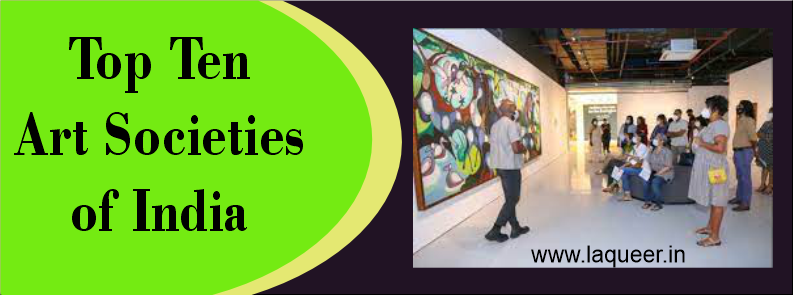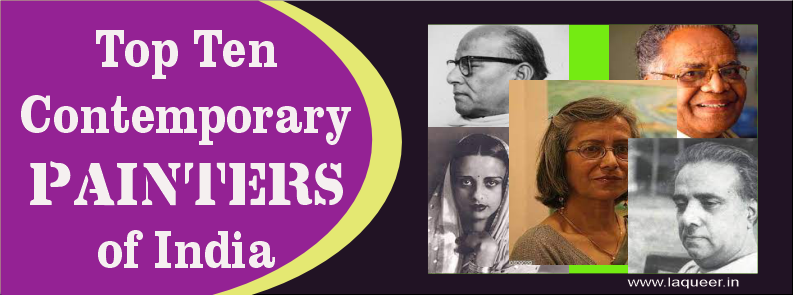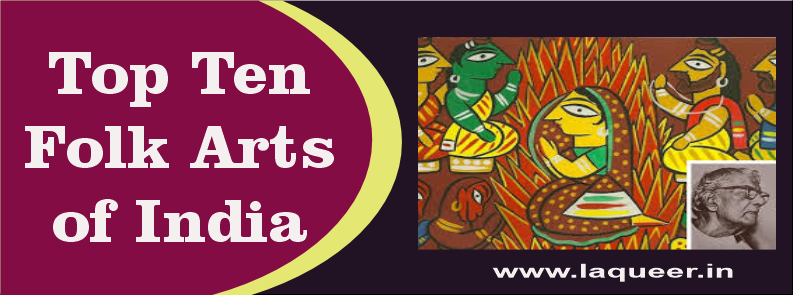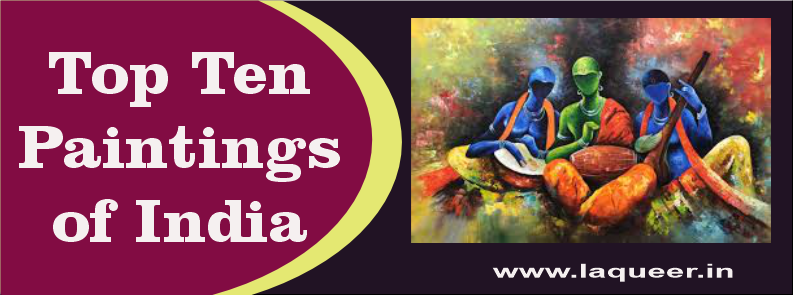Art has always been a magnificent expression of human creativity, and throughout history, towering institutions have emerged to cultivate and celebrate the world of artistic wonders. These beacons of artistic brilliance have become sanctuaries for artists, patrons, and enthusiasts alike, fostering the growth of art in all its forms. From timeless masterpieces to groundbreaking innovations, let us embark on a journey to explore the top ten great towers of the art field and the institutions that have become their pillars of inspiration.

Top Ten Art Society of India
India is home to numerous art societies that promote various forms of art and cultural activities. Here are the names of TOP TEN prominent art societies in India:
- Lalit Kala Akademi: The National Academy of Art, also known as Lalit Kala Akademi, is an autonomous organization established by the Government of India. It promotes and showcases contemporary and traditional Indian art forms.
- Sahitya Akademi: The National Academy of Letters, Sahitya Akademi, is an organization that promotes literature and literary activities across India.
- Sangeet Natak Akademi: The National Academy of Music, Dance, and Drama, Sangeet Natak Akademi, is an autonomous body established to preserve, promote, and disseminate Indian performing arts.
- All India Fine Arts and Crafts Society (AIFACS): AIFACS is a leading art society in India that aims to foster creativity and support various forms of visual arts and crafts.
- Bombay Art Society: Established in 1888, the Bombay Art Society is one of the oldest art societies in India. It organizes exhibitions, workshops, and art competitions to promote visual arts.
- Delhi Art Society: The Delhi Art Society is an organization that encourages and showcases artworks of both established and emerging artists. It hosts exhibitions, workshops, and art-related events.
- Karnataka Chitrakala Parishath: Based in Bangalore, Karnataka Chitrakala Parishath is an art institution that supports and promotes visual arts in the state of Karnataka.
- Tamil Nadu Ovia Nunkalai Kuzhu: Tamil Nadu Ovia Nunkalai Kuzhu, also known as Tamil Nadu Artists Association, is an art society that encourages and supports artists and their creative endeavours in Tamil Nadu.
- Rajasthan Lalit Kala Academy: Rajasthan Lalit Kala Academy is an organization that promotes various forms of art and culture in the state of Rajasthan.
- West Bengal Fine Arts Society: West Bengal Fine Arts Society is an art society based in Kolkata, West Bengal. It organizes exhibitions, workshops, and cultural events to promote art in the region.
These are just a few examples of the art societies in India. There are many more at both national and regional levels that contribute to the rich artistic landscape of the country.

Top Ten Contemporary Painters of India
India has a rich artistic heritage, and there have been many talented painters who have made significant contributions to the world of art. Here are TOP TEN renowned painters from India:
- Raja Ravi Varma (1848-1906): Considered one of the greatest painters in Indian history, Raja Ravi Varma is known for his portrayal of Indian mythology and epics, as well as his realistic and detailed portraiture.
- Amrita Sher-Gil (1913-1941): A pioneer of modern Indian art, Amrita Sher-Gil’s works often depicted the lives of Indian women and the rural poor. Her unique style blended Western influences with traditional Indian art forms.
- Jamini Roy (1887-1972): Known for his bold and simplistic style, Jamini Roy’s works showcased folk and village art traditions of Bengal. He drew inspiration from Indian folk art, particularly Kalighat paintings.
- Tyeb Mehta (1925-2009): Tyeb Mehta was a leading figure of the Indian modern art movement. His iconic “Diagonal Series” and “Mahishasura” painting are widely acclaimed and symbolize the struggle of the individual against oppressive forces.
- F. Husain (1915-2011): Often referred to as the “Picasso of India,” Maqbool Fida Husain was a prolific artist known for his versatility and contemporary style. His works covered a wide range of themes, from Indian mythology to social issues.
- H. Raza (1922-2016): Syed Haider Raza was a prominent Indian modernist painter. He was known for his geometric abstraction, particularly his iconic use of the bindu (dot) and vivid color palette.
- N. Souza (1924-2002): Francis Newton Souza was a co-founder of the Progressive Artists’ Group and a key figure in the Indian modern art movement. His works often reflected his personal anguish and existential themes.
- Subodh Gupta (born 1964): A contemporary artist, Subodh Gupta gained international recognition for his large-scale installations and sculptures. He often incorporates everyday objects from Indian life, such as stainless steel utensils, to explore themes of globalization and cultural identity.
- Jogen Chowdhury (born 1939): Jogen Chowdhury is known for his distinctive style of figurative art, characterized by his use of bold lines and cross-hatching. His works capture the essence of everyday life in Bengal and often explore socio-political themes.
- Anjolie Ela Menon (born 1940): Anjolie Ela Menon is a prominent contemporary Indian artist known for her figurative paintings and murals. Her works reflect a strong sense of spirituality and often feature hauntingly beautiful and enigmatic subjects.
These ten painters have significantly influenced Indian art and have left a lasting impact on the global art scene. However, there are many more talented and celebrated painters in India, and this list is by no means exhaustive.

Top Ten Art Collage of India
India is home to numerous prestigious art colleges that have contributed to the growth and development of art education in the country. Here is a list of top ten renowned art colleges in India:
- Sir J.J. School of Art, Mumbai: Founded in 1857, Sir J.J. School of Art is one of the oldest and most prestigious art colleges in India. It offers undergraduate and postgraduate programs in various art disciplines.
- College of Art, Delhi: Established in 1942, the College of Art in Delhi is a prominent institution for art education. It offers courses in fine arts, applied arts, and visual communication.
- Faculty of Fine Arts, MS University, Baroda: The Faculty of Fine Arts at Maharaja Sayajirao University of Baroda is renowned for its comprehensive art programs. It has a rich legacy and offers courses in painting, sculpture, printmaking, and more.
- Government College of Art & Craft, Kolkata: Founded in 1864, the Government College of Art & Craft in Kolkata is one of the oldest and most esteemed art institutions in India. It offers programs in various art disciplines.
- Kala Bhavan, Visva Bharati University, Santiniketan: Kala Bhavan is a renowned art college located in Santiniketan, West Bengal. It was established by Rabindranath Tagore and offers undergraduate and postgraduate programs in visual arts.
- College of Fine Arts, Karnataka Chitrakala Parishath, Bengaluru: The College of Fine Arts, affiliated with Karnataka Chitrakala Parishath, is a prominent art institution in Bengaluru. It offers undergraduate and postgraduate programs in fine arts.
- Rachana Sansad College of Applied Art and Craft, Mumbai: Rachana Sansad is a well-known art college in Mumbai, offering programs in fine arts, applied arts, and other creative disciplines.
- Government College of Art, Chandigarh: The Government College of Art in Chandigarh is a reputed art institution in Northern India. It provides education in various art forms, including painting, sculpture, and graphic design.
- College of Fine Arts, Thiruvananthapuram: The College of Fine Arts in Thiruvananthapuram, Kerala, is a prominent art college affiliated with the University of Kerala. It offers undergraduate and postgraduate courses in fine arts.
- Shantiniketan College of Fine Arts, Nagpur: Shantiniketan College of Fine Arts is a renowned art college in Nagpur, Maharashtra. It offers undergraduate and postgraduate programs in fine arts.
These art colleges have played a significant role in nurturing artistic talent and promoting art education in India. There are many other notable art colleges across the country as well, each contributing to the vibrant art scene in their respective regions.

Ten Folk Art of India
India is known for its diverse cultural heritage, and each region has its own unique folk art forms that reflect the traditions, customs, and artistic expressions of the local communities. Here are top ten types of folk art from different parts of India:
- Madhubani (Mithila) Painting: Originating from the Mithila region of Bihar, Madhubani painting is characterized by intricate and vibrant depictions of nature, mythology, and religious themes.
- Warli Painting: Warli painting is a tribal art form practiced by the Warli tribe in Maharashtra and Gujarat. It consists of simple geometric shapes and patterns, primarily depicting scenes of daily life.
- Patachitra: Patachitra is a traditional folk art from Odisha and West Bengal. It involves intricate scroll paintings on cloth or canvas, depicting mythological stories, folk tales, and village scenes.
- Gond Art: Gond art originates from the Gond tribal community of Madhya Pradesh. It is known for its intricate patterns and vibrant colors, often depicting nature, animals, and tribal deities.
- Kalamkari: Kalamkari is a traditional art form from Andhra Pradesh and Telangana. It involves hand-painted or block-printed textiles with intricate motifs and scenes from epics and mythological stories.
- Phad Painting: Phad painting is a traditional folk art from Rajasthan. It consists of large narrative scroll paintings depicting stories of local folk heroes, gods, and goddesses.
- Kalighat Painting: Kalighat painting originated in Kolkata (formerly Calcutta) and is characterized by bold lines, vibrant colors, and social satire. It often depicts mythological themes, everyday life, and political and social issues.
- Rogan Painting: Rogan painting is an ancient art form from Gujarat. It involves the use of a special type of castor oil to create intricate and colorful patterns on fabric, primarily used for textiles.
- Tanjore Painting: Tanjore painting is a traditional art form from Tamil Nadu. It is known for its rich colors, gold leaf embellishments, and depictions of deities, particularly in Hindu mythology.
- Thangka Painting: Thangka painting is a Buddhist art form practiced in various parts of India, especially in Ladakh, Sikkim, and Himachal Pradesh. These intricate paintings on cloth depict Buddhist deities, mandalas, and religious narratives.
These are just a few examples of the diverse folk art forms found in India. Each region has its own unique styles, techniques, and themes, showcasing the cultural richness and artistic expressions of the local communities.

Ten Famous Painting of India
India has a rich artistic heritage, and there are several famous paintings that have made significant contributions to the world of art. Here are top ten iconic and widely recognized paintings from India:
- “Bharat Mata” by Abanindranath Tagore: This iconic painting, created in 1905, depicts Bharat Mata, the personification of Mother India, symbolizing the nation’s unity and diversity.
- “The Last Supper” by Raja Ravi Varma: Raja Ravi Varma’s famous painting, completed in 1890, portrays the biblical scene of Jesus Christ’s Last Supper with his disciples.
- “Hamsa Damayanti” by Jamini Roy: Painted by Jamini Roy, this artwork depicts the legendary tale of Damayanti, a princess who was transformed into a swan (hamsa). It showcases Roy’s distinctive style and use of bold lines and earthy colors.
- “Mother India” by F.N. Souza: This powerful and thought-provoking painting by F.N. Souza depicts a mother figure representing India, with her anguish and pain reflecting the struggles of the nation.
- “Gopis Pining for Krishna” by S.H. Raza: Painted by S.H. Raza, this artwork portrays the intense yearning of the gopis (cowherd women) for Lord Krishna, showcasing Raza’s use of geometric abstraction and vibrant colors.
- “Birth of Krishna” by M.F. Husain: M.F. Husain’s painting captures the birth of Lord Krishna, an important Hindu deity. Husain’s distinctive style and use of bold brushwork are evident in this artwork.
- “The Descending Night” by Tyeb Mehta: This powerful painting by Tyeb Mehta depicts a falling figure against a deep red background, symbolizing the human condition and existential struggles.
- “Elephant, Horse, and Rider” by Amrita Sher-Gil: Amrita Sher-Gil’s painting depicts an artistically rendered elephant, horse, and rider, showcasing her unique style that blends Western and Indian influences.
- “The Prophets” by Nandalal Bose: Nandalal Bose’s famous painting portrays a group of wise prophets, drawing inspiration from traditional Indian art forms and religious symbolism.
- “Krishna and Radha” by Anjolie Ela Menon: Anjolie Ela Menon’s artwork depicts the divine love between Lord Krishna and Radha, capturing their ethereal beauty and spiritual connection.
These famous paintings have left a lasting impact on the Indian art scene and have garnered international recognition. They showcase the diverse styles, themes, and artistic expressions of Indian artists throughout history.

Top ten Styles and techniques of painting
Indian painting has a rich history that spans centuries and encompasses a wide range of styles and techniques. Here are top ten notable techniques used in Indian painting:
1. Miniature Painting: Miniature painting is a meticulous technique characterized by intricate and highly detailed artwork, often executed on small surfaces such as manuscripts or folios.
2. Mughal Painting: Mughal painting is known for its fusion of Indian and Persian styles, combining delicate brushwork, intricate details, and vibrant colors to depict historical events, court scenes, and portraits.
3. Rajput Painting: Rajput painting originated in the royal courts of Rajasthan and the Pahari region. It emphasizes vibrant colors, bold lines, and themes of mythology, poetry, and romance.
4. Tanjore Painting: Tanjore painting is a distinctive South Indian art form known for its use of rich colors, gold leaf embellishments, and semi-precious stones. It often depicts deities and mythological scenes.
5. Madhubani Painting: Also known as Mithila painting, Madhubani painting originated in Bihar, India. It is characterized by intricate patterns, vibrant colors, and themes inspired by mythology, nature, and rituals.
6. Pattachitra Painting: Pattachitra painting hails from the state of Odisha and is executed on a cloth canvas. It often depicts religious themes, stories from epics, and scenes from daily life.
7. Warli Painting: Warli painting is a tribal art form from Maharashtra, known for its simplicity and use of basic geometric shapes. It typically depicts scenes from rural life using white pigment on a red ochre background.
8. Kalighat Painting: Kalighat painting originated in the 19th century in Kolkata, primarily around the Kalighat temple. It showcases bold, stylized figures, often depicting social and political commentary.
9. Bengal School of Art: The Bengal School of Art, led by artists like Abanindranath Tagore and Nandalal Bose, revived traditional Indian painting techniques and incorporated modern influences. It emphasized individual expression and a return to indigenous artistic roots.
10. Miniature Mural Painting: This technique involves creating detailed murals on a larger scale while retaining the meticulousness of miniature painting. It is often seen in historical palaces, temples, and public spaces.
These ten techniques represent a small glimpse into the diverse and vibrant world of Indian painting, each with its own unique characteristics and regional influences.